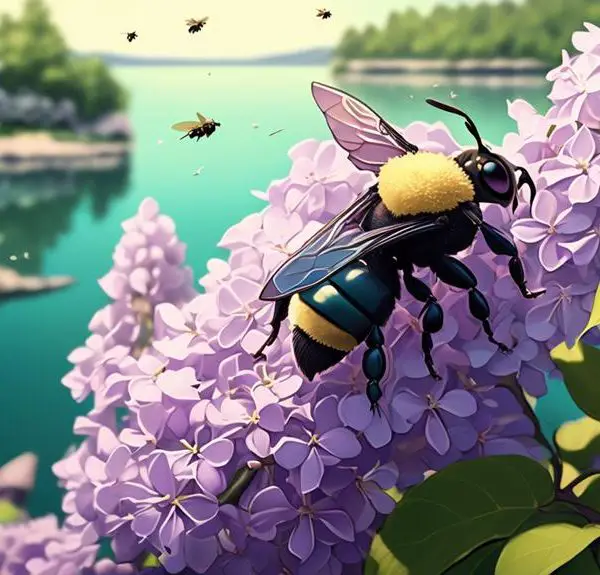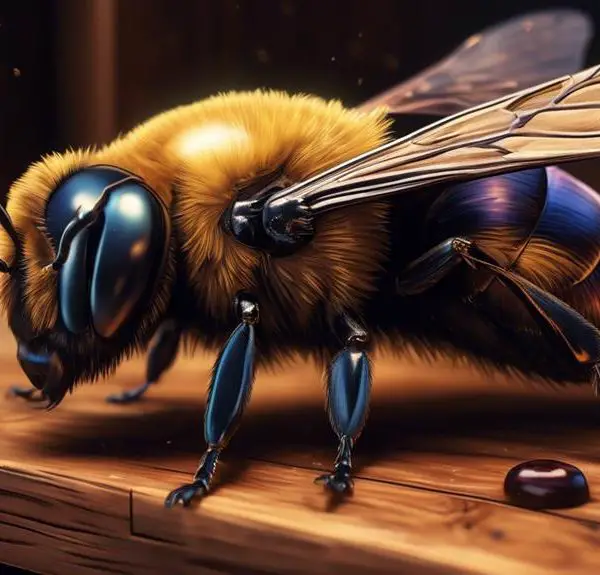Observe the industrious Carpenter Bee in Northern California, a misunderstood insect with captivating nesting habits and a crucial role in our ecosystem.
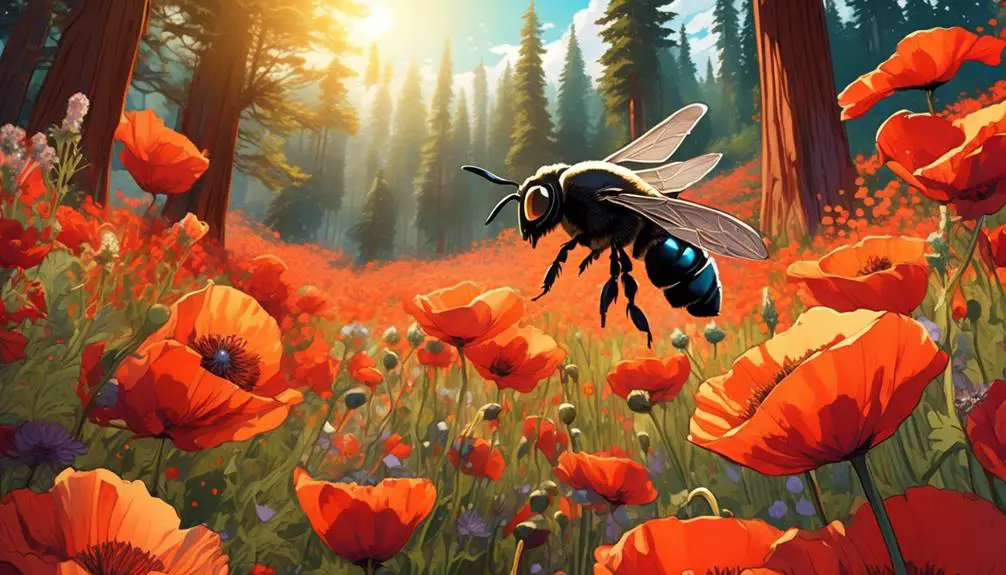
Carpenter Bee Northern California
Just by coincidence, you've likely crossed paths with the Carpenter Bee in Northern California, even if you didn't realize it at the time. These industrious creatures, known for their solitary behavior and unique nesting habits, are an integral part of our local ecosystem.
You might be curious why they're called 'Carpenter' bees and how they contribute to the biodiversity around us. Well, let's just say their name is a hint to their intriguing behavior and you're about to discover some fascinating facts about these often misunderstood insects.
Key Takeaways
- Carpenter Bees in Northern California have a shiny, black, metallic body and a hairless, glossy abdomen.
- Male Carpenter Bees in Northern California cannot sting, while females sting only when provoked.
- Carpenter Bees in Northern California contribute to pollination, aid in the decomposition of dead trees, and provide nourishment for bird species.
- Coexisting with Carpenter Bees in Northern California involves respecting their space, educating others about their importance, and creating bee-friendly habitats.
Understanding the Carpenter Bee
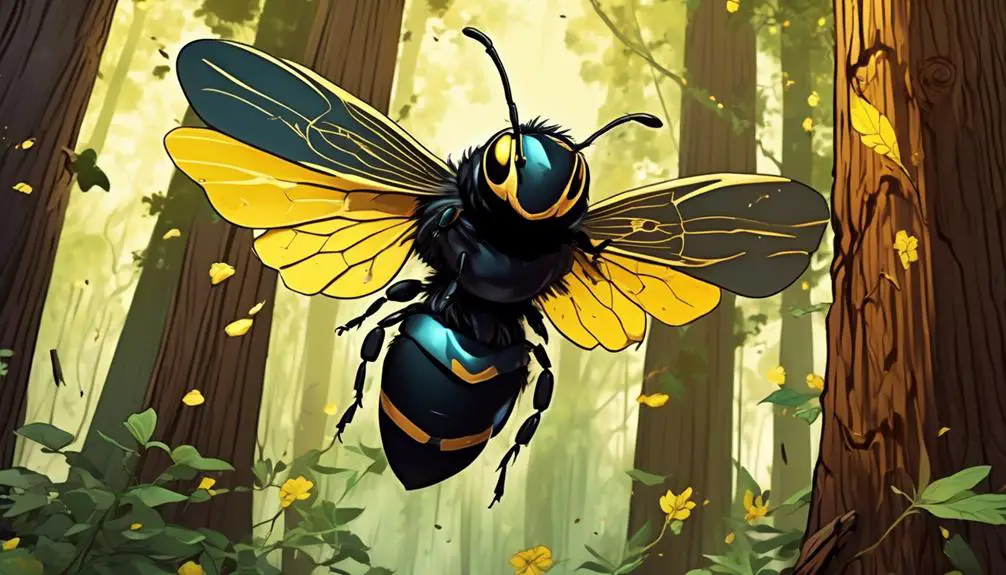
To fully grasp the nature of the Carpenter Bee, you must delve into its unique biological characteristics, habitat preferences, and behavioral patterns.
This bee, a robust species with a shiny, black, metallic body, can be easily mistaken for a bumblebee, but a closer look reveals a hairless, glossy abdomen, setting it apart.
In terms of habitat, you'll often find them in Northern California, favoring areas with plenty of wood for nesting, such as forest edges or your backyard. They're not social insects; instead, they prefer solitude, with females boring into wood to create nests.
Behaviorally, Carpenter Bees are docile. Male bees, despite their aggressive flying patterns, can't sting. Females can but usually won't unless directly provoked. They're also efficient pollinators. Unlike other bees that collect nectar by entering the flower's center, Carpenter bees 'rob' nectar from the side, inadvertently pollinating the flower in the process.
Understanding these factors is crucial in appreciating this unique species. Whether you're a backyard observer or a seasoned entomologist, the Carpenter Bee's distinct traits make it a fascinating subject of study.
Carpenter Bee's Role in Ecosystem

You mightn't realize it, but the Carpenter Bee plays a vital role in our ecosystem, particularly in the process of pollination. These industrious insects are a key contributor to the reproduction of various plants. They're equipped with specialized hairs on their hind legs called scopae, which collect pollen from one flower and transport it to another.
Carpenter Bees' contribution doesn't stop at pollination, though. They're also integral to the food chain, providing nourishment for various bird species. Indeed, their presence indicates a healthy, balanced ecosystem.
But there's a unique aspect to Carpenter Bees that you mightn't be aware of: their nesting behavior. Unlike many bee species, they don't live in colonies. Instead, they carve out individual nests in wood, hence their name. This behavior aids in the decomposition of dead trees, returning nutrients to the soil.
Identifying Carpenter Bees
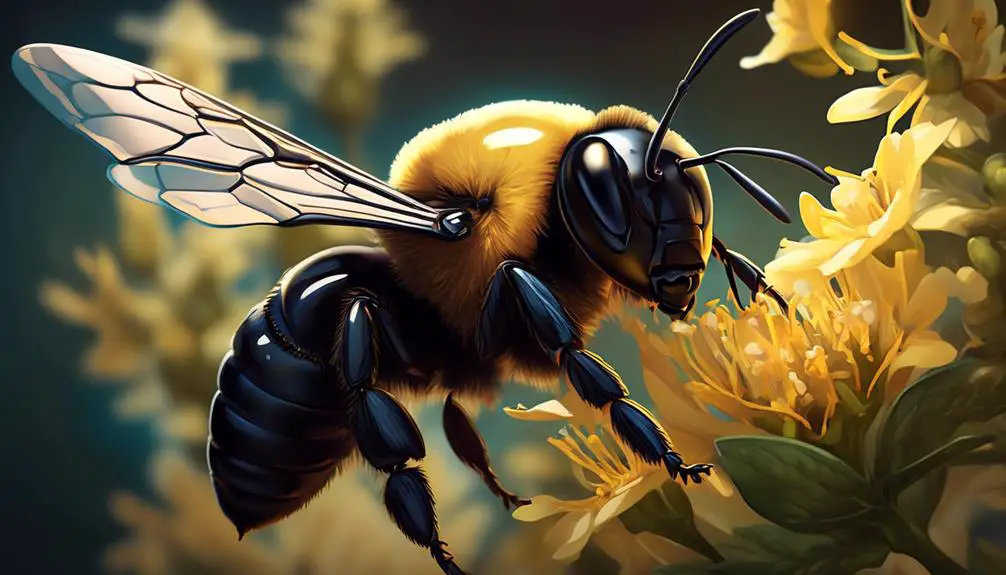
Spotting a Carpenter Bee in your vicinity isn't as straightforward as you might think, given their unique physical characteristics and behaviors. It's crucial to recognize their distinct traits for precise identification.
Carpenter Bees, scientifically named Xylocopa, have a robust, metallic body with a round, hairless abdomen. They're often mistaken for Bumblebees, but a closer examination will reveal a shinier, less hairy body. Adult Carpenter Bees can measure from 12 to 25 millimeters long. The males usually have a yellow face, while females are predominantly black.
Their flight behavior also sets them apart. Unlike other bees, Carpenter Bees have a hovering flight pattern. They're often seen darting and diving around wooden structures, where they bore holes for nesting.
Furthermore, it's their distinctive sound that sets them apart. Their buzzing is noticeably louder compared to other bees, a consequence of their larger size and stronger flight muscles.
Coexisting With Carpenter Bees
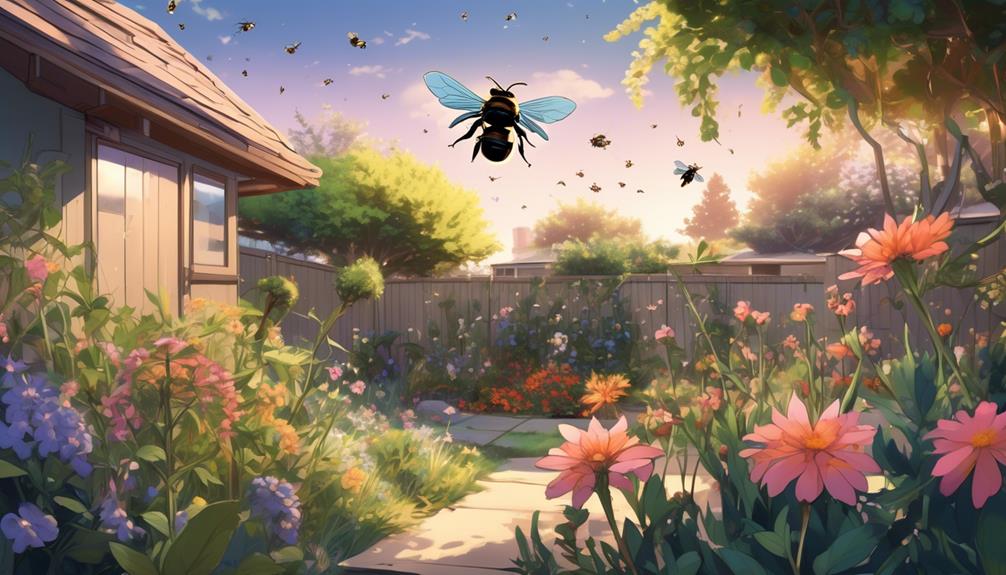
Having identified these unique creatures, it's essential to understand how we can peacefully coexist with Carpenter Bees in our environment. Contrary to popular belief, these bees aren't destructive pests, but rather beneficial insects that play a vital role in our ecosystem. They're effective pollinators, contributing to the growth of plants and crops.
To coexist with these bees, it's crucial to respect their space. If you spot a nest, don't attempt to remove it yourself. It's their home and they'll likely defend it. Instead, consider contacting a professional if you're concerned about potential damage to your property.
Another key aspect to coexisting with Carpenter Bees is educating yourself and others about them. Many people are unaware of their importance, and fear often leads to unnecessary extermination. By spreading knowledge about these beneficial insects, you can help change public perception and ensure their survival.
Lastly, you can build bee-friendly habitats in your yard such as bee houses or plant bee-friendly flowers. Ultimately, coexistence comes down to understanding and respect. With these actions, you'll not only support Carpenter Bees, but also contribute to a healthier, more balanced ecosystem.
Management Strategies for Carpenter Bees
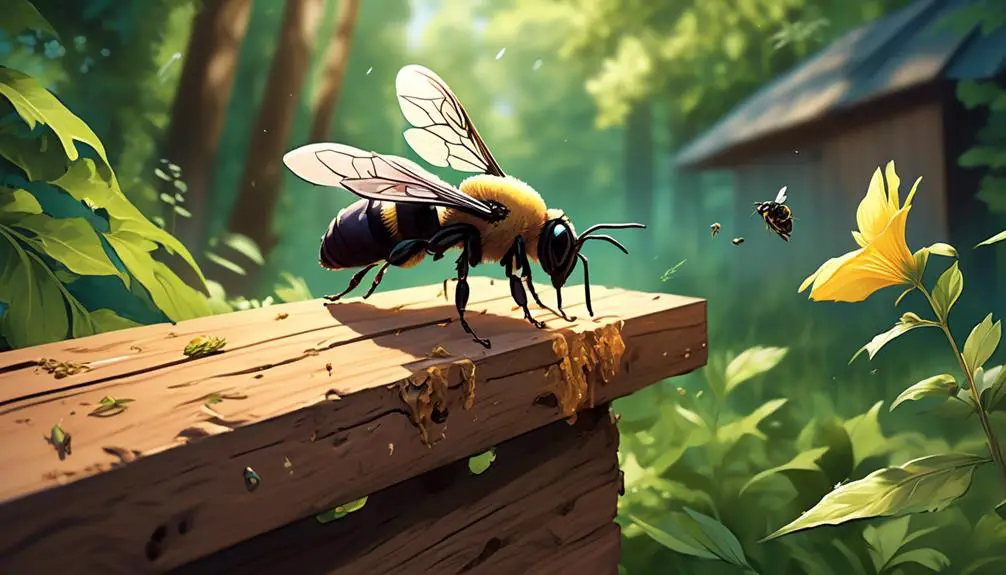
In managing Carpenter Bees, it's crucial to employ strategies that ensure their survival while preventing potential damage to your property. These bees play a vital role in the ecosystem as effective pollinators, despite the potential threat they pose to wooden structures.
One effective strategy is to use bee-safe paint or varnish on exposed wood surfaces. Carpenter Bees are less likely to burrow into painted or varnished wood, thus reducing the risk of structural damage.
You can also install bee boxes, which serve as desirable nesting alternatives for these bees. This method diverts their attention from your property while providing them a suitable habitat.
When bees do establish nests in your property, consider hiring a pest control professional who's experienced in dealing with Carpenter Bees. They can implement strategies such as using non-toxic dusts in the bee tunnels, which will eliminate the bees without causing harm to the surrounding environment.
Conclusion
In conclusion, you've discovered the fascinating world of Northern California's carpenter bees. You now understand their ecological role and can identify them.
You've also learned strategies to peacefully coexist and manage these creatures. Remember, they're not just pests, but crucial pollinators in our ecosystem.
With a bit of knowledge and patience, you can play a part in their conservation while maintaining your home's integrity.

